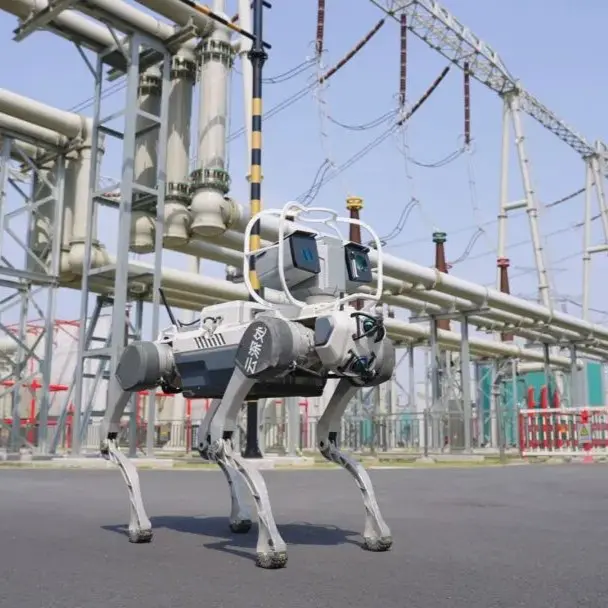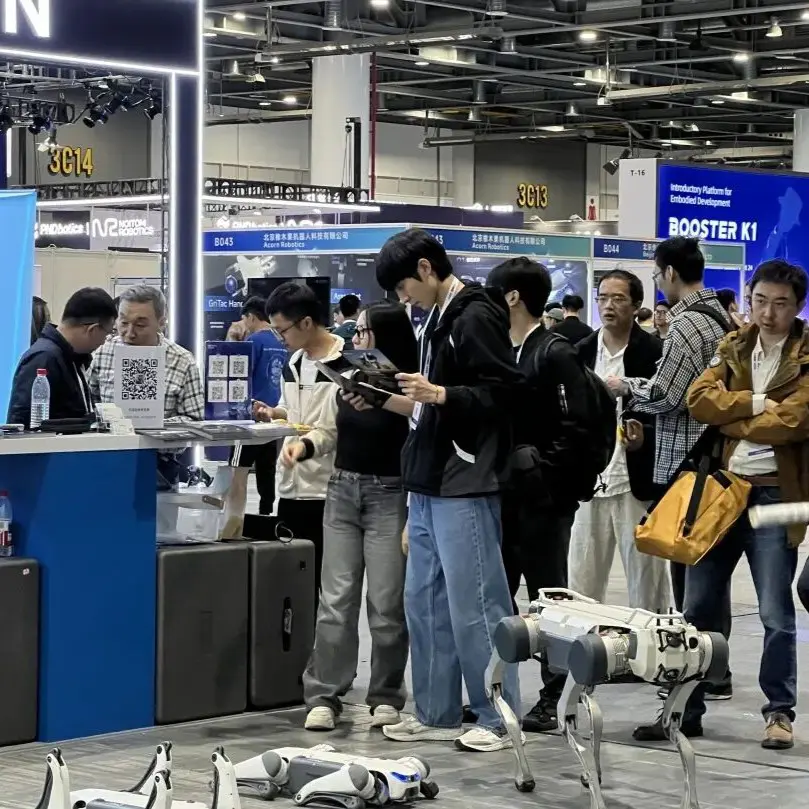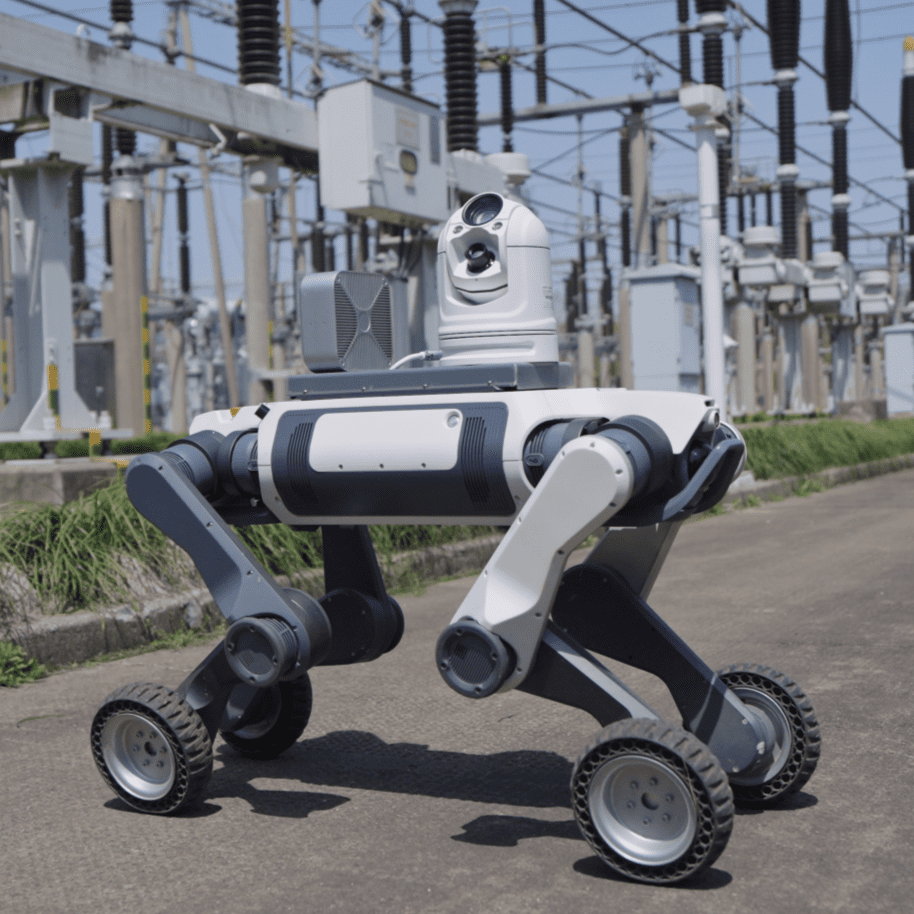At an altitude of over 4,800 meters, deep within the uninhabited Kekexili region on the Qinghai-Tibet Plateau, an extraordinary experiment unfolded. A lifelike “robotic Tibetan antelope,” built on DEEP Robotics’ Jueying X30 quadruped robot, quietly joined a herd of real Tibetan antelopes near Zhuonai Lake, moving and migrating alongside them.
This pioneering mission shattered traditional limits of human observation distance, enabling close-range, non-intrusive monitoring of one of the world’s most sensitive wildlife species. It marked a major milestone in applying AI-driven embodied intelligence to ecological conservation and wildlife research in some of the planet’s harshest environments.

AI Meets the Wild: Robotics in the “Forbidden Zone for Humans”
The “Robotic Tibetan Antelope” project was initiated by Xinhua News Agency’s New Media Center, with DEEP Robotics providing the Jueying X30 quadruped platform and communication control system, while Bailuming Studio handled the realistic animal design and outer shell fabrication.
Through AI learning and adaptive motion control, the X30 robot successfully traversed snowfields, swamps, deserts, and riverbeds during field trials. Alongside it, DEEP Robotics’ Lynx M20 wheel-legged robot participated in testing as a logistics support unit, carrying oxygen tanks and emergency equipment for the research team—demonstrating remarkable stability under the plateau’s thin air, high winds, and extreme temperature fluctuations.
This mission represents the first time an embodied-intelligence robot has entered the Kekexili reserve, marking DEEP Robotics’ expansion of AI and robotics applications into uncharted environmental frontiers.
Expanding the Limits of Wildlife Observation
Located in Yushu Prefecture, Qinghai Province, Kekexili sits nearly 5,000 meters above sea level. Its frigid, oxygen-deficient climate has earned it the title “Kingdom of Wildlife.” Every summer from May to August, thousands of Tibetan antelopes migrate from the Sanjiangyuan region, Qiangtang Plateau, and Altun Mountains to Zhuonai Lake to give birth.
These animals are extremely sensitive to human presence. Using DEEP Robotics’ teleoperation system, the robotic antelope maintained control distances up to 2 kilometers while gracefully navigating mountain paths and wetlands. This approach eliminated vehicle or human disturbance, allowing for close-up observation and zero-interference recording of the antelopes’ natural behaviors.
“Many mysteries about the Tibetan antelope remain unsolved—such as why they migrate to give birth,”
said Dr. Lian Xinming, researcher at the Northwest Institute of Plateau Biology, Chinese Academy of Sciences.
“Introducing robotics and artificial intelligence into Kekexili brings new possibilities for wildlife research and protection.”
Engineering Excellence for Extreme Environments
Operating at high altitude poses immense challenges: freezing temperatures, low oxygen levels, and rough terrain make conventional research methods nearly impossible. DEEP Robotics’ legged robots provide the adaptability needed to overcome these barriers.
In this mission, the Jueying X30 quadruped and Lynx M20 wheel-legged robot, both trained through reinforcement learning and AI motion planning, showcased natural, agile movement across snow, mud, and rocky surfaces, achieving stable, autonomous navigation under extreme conditions.
The customized “Robotic Antelope” X30 was equipped with a self-organizing mesh communication module, capable of rapidly deploying field networks in complex terrain. Its multi-hop, decentralized connectivity ensures real-time data transmission and multi-agent coordination, even with no existing communication infrastructure.
Built to Endure: Industrial Strength in Nature’s Harshest Lab
As DEEP Robotics’ flagship model, the Jueying X30 supports payloads up to 85 kilograms and operates for 2.5–4 hours on a single charge. Its fusion perception system integrates visual, thermal, and environmental sensing to maintain stability and awareness in rugged conditions. With real-time monitoring and safety management systems, the X30 has already been deployed in power stations, factories, pipeline inspections, emergency response, and firefighting reconnaissance — and now, even wildlife conservation.
The Lynx M20, an all-terrain wheel-legged robot built for hazardous environments, leverages advanced AI motion control algorithms to autonomously adjust posture on complex terrain. Its hybrid wheel-leg design combines the speed of wheeled robots (up to 5 m/s) with the obstacle-crossing ability of legged platforms. The M20 is rated IP67 for water and dust resistance and operates reliably between –20 °C and 55 °C — making it an ideal assistant for scientific expeditions in unforgiving environments.
Empowering Conservation Through Technology
For years, rangers in Kekexili have risked their lives to patrol against poaching, illegal mining, and unauthorized crossings. With embodied AI robotics entering conservation work, new hope emerges for safer, data-driven environmental protection.
“Robotics and artificial intelligence provide new technological power for Kekexili’s conservation,”
said Qiu Peizhashi, Head of Law Enforcement Supervision, Hoh Xil Management Office, Sanjiangyuan National Park.
DEEP Robotics’ mission has always been to send robots where it’s too dangerous for humans to go and to perform the repetitive tasks that humans shouldn’t have to. In the future, DEEP Robotics plans to further tailor its robotic systems for plateau conditions — contributing to the intelligent protection of Tibetan antelopes and the preservation of Earth’s most remote ecosystems.






